I have written about firefighter parades in Alexandria, VA, in at least two other articles here and here. Today, I share another 1910 photo postcard from one of the same parades I wrote about previously. This photo shows the corner of Prince Street and South St. Asaph Street. I happen to live in this block of South St. Asaph, this corner is on my way to Starbucks, and thus, I know it very well.
I'm not sure whether the Hampton Fire Company is from Hampton, Virginia, or Hampton, Pennsylvania. The photograph is not all that interesting, at first glance, but there are some interesting details in the background. Let's take a closer look.

The ladies in the fancy dresses are impressive and must've been very hot, like the firefighters. There are a couple of other onlookers if you look closely. Based on the shadows, I would say the shot was taken around 3-6 PM, a less than sensible time for a parade in August in full regalia. Here's how that church building looks today:
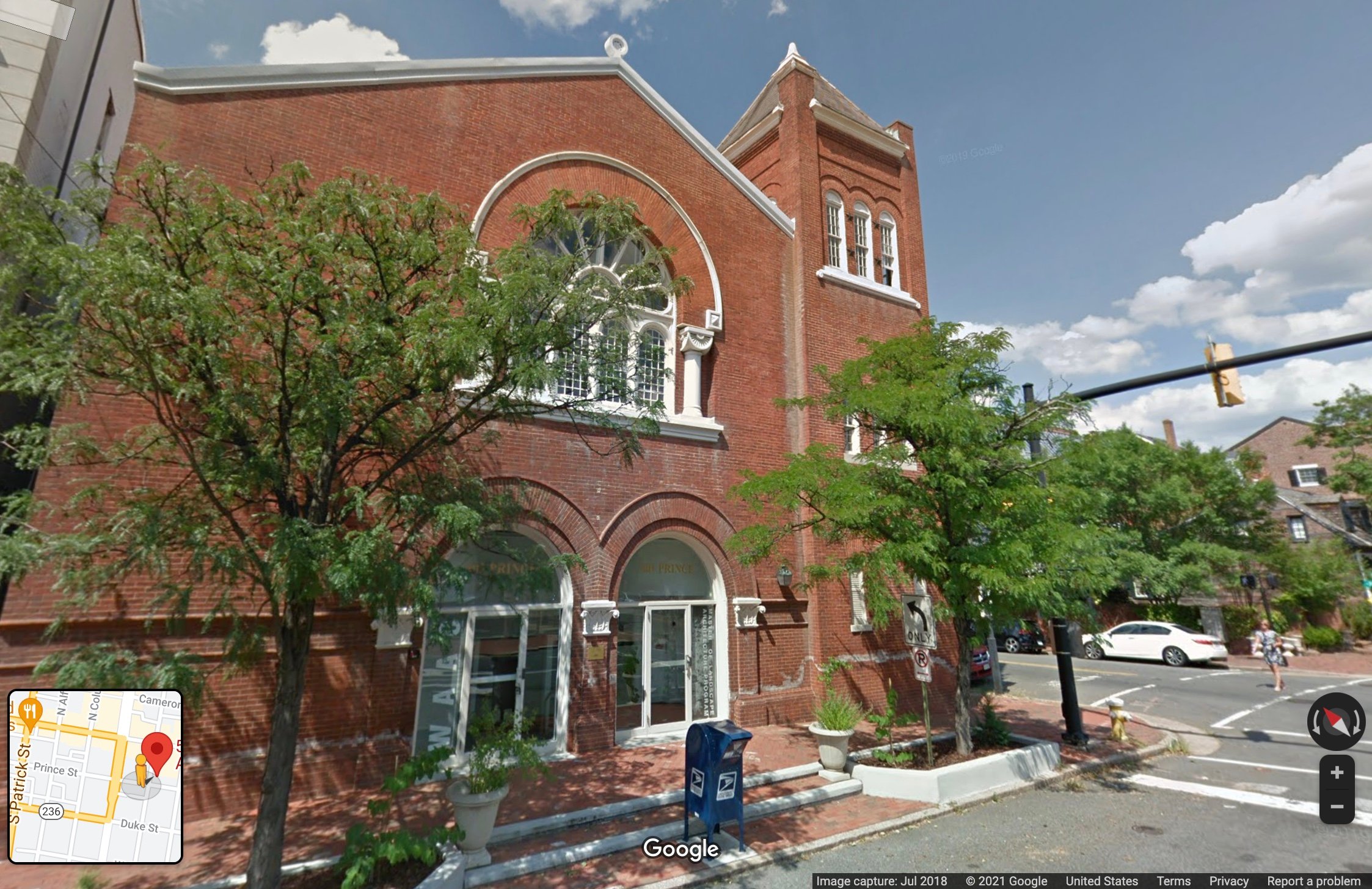
It's no longer a church and has been converted to offices.
Richard Wright noted on Facebook:
SECOND PRESBYTERIAN CHURCH
Corner of St. Asaph and Prince Streets --- Alexandria, Va.
The dominant Presbyterian church in Alexandria for many years, the congregation of Second Presbyterian Church cared for the Old Presbyterian Meeting House after it closed in 1899 until it reopened in 1949 with a new congregation.
In June 1817, sixty-three members withdrew from the Meeting House under the Presbytery of Baltimore and formed the Second Presbyterian Church in a frame building in the 300 block of South Fairfax Street.
The congregation built a new Greek Revival structure on the northwest corner of Prince and South St. Asaph streets in 1840. The church (photo below right) was redesigned with a tower by Alexandria architect, Glenn Brown, in a Romanesque Revival style in 1889.
Zooming into another portion of the photograph, we can see there was a laundromat on the corner. The Lee Soon Laundry occupied a one-story building on the site.
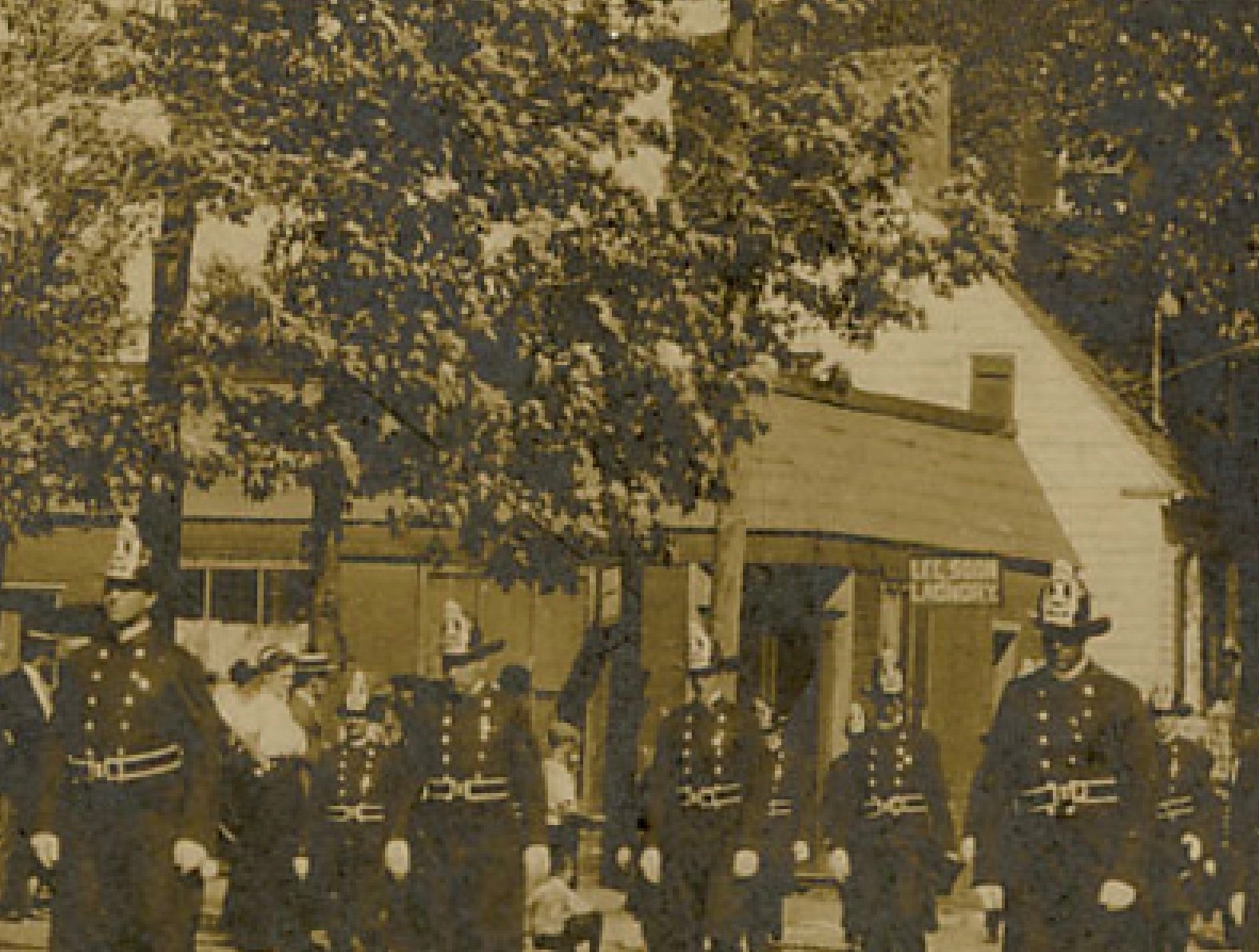
In the background, there are some interesting bystanders, the Murray-Dick-Fawcett House, and the Lee Soon Laundry, which just three years later would be replaced by the Westminster Building, an extension of the Second Presbyterian Church across the street.
Here's a photo of the Lee Soon Laundry in 1968, just half a block up the street.

A little bit further away from King Street is the Westminster Building, a building built by the Second Presbyterian Church. The Lee Soon Laundry of 1968 can be seen in the background.
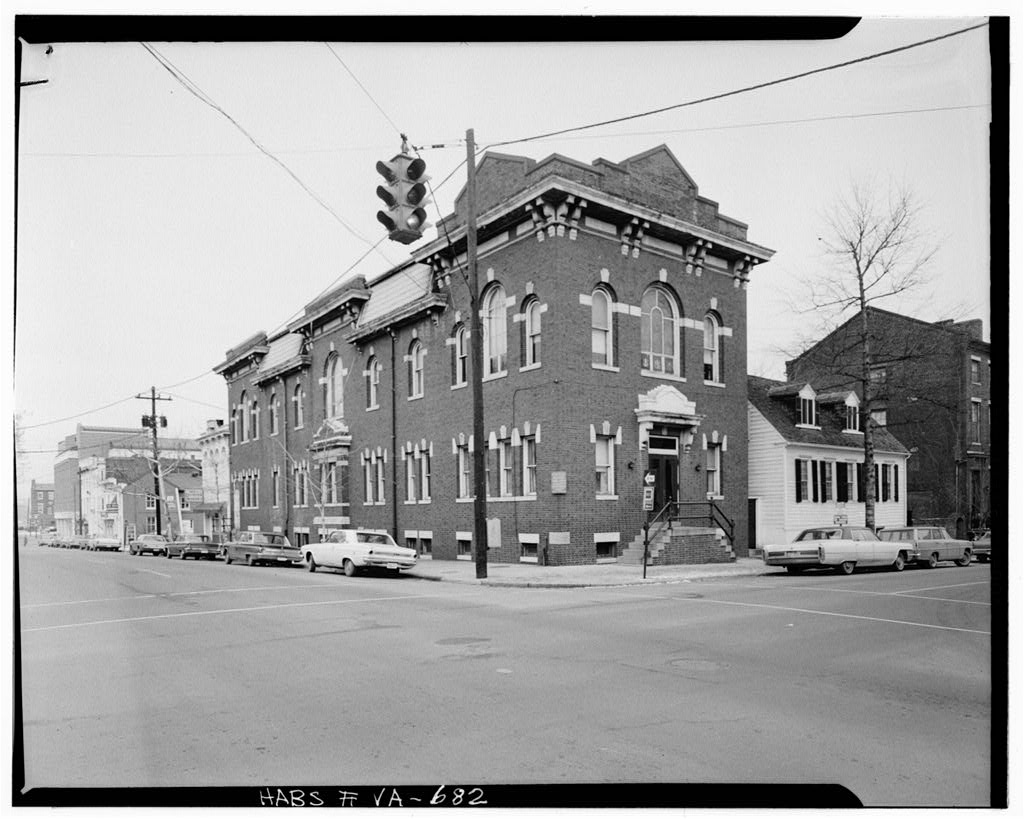
Today that corner looks like this:

The Westminster building has been replaced by a park that is part of the Murray-Dick-Fawcett House.
Richard Wright had more to say about the Westminster building:
Needing more room, a new church addition was constructed across the street on the northeast corner in 1913, after a cornerstone laying in 1912. Known as the "Westminister Building," it initially had a gym in the basement and the Sunday School on the first floor as well as serving the residents' needs as a place for social events.
However, "Westminister" was demolished in the 1960's as another victim of the Gadsby Urban Renewal program. Its site became a walled-garden addition to the Murray-Dick-Fawcett House, one of the earliest homes in the city, and possibly the least altered 18th-century dwelling in Northern Virginia.
Here is the front and back of the postcard.
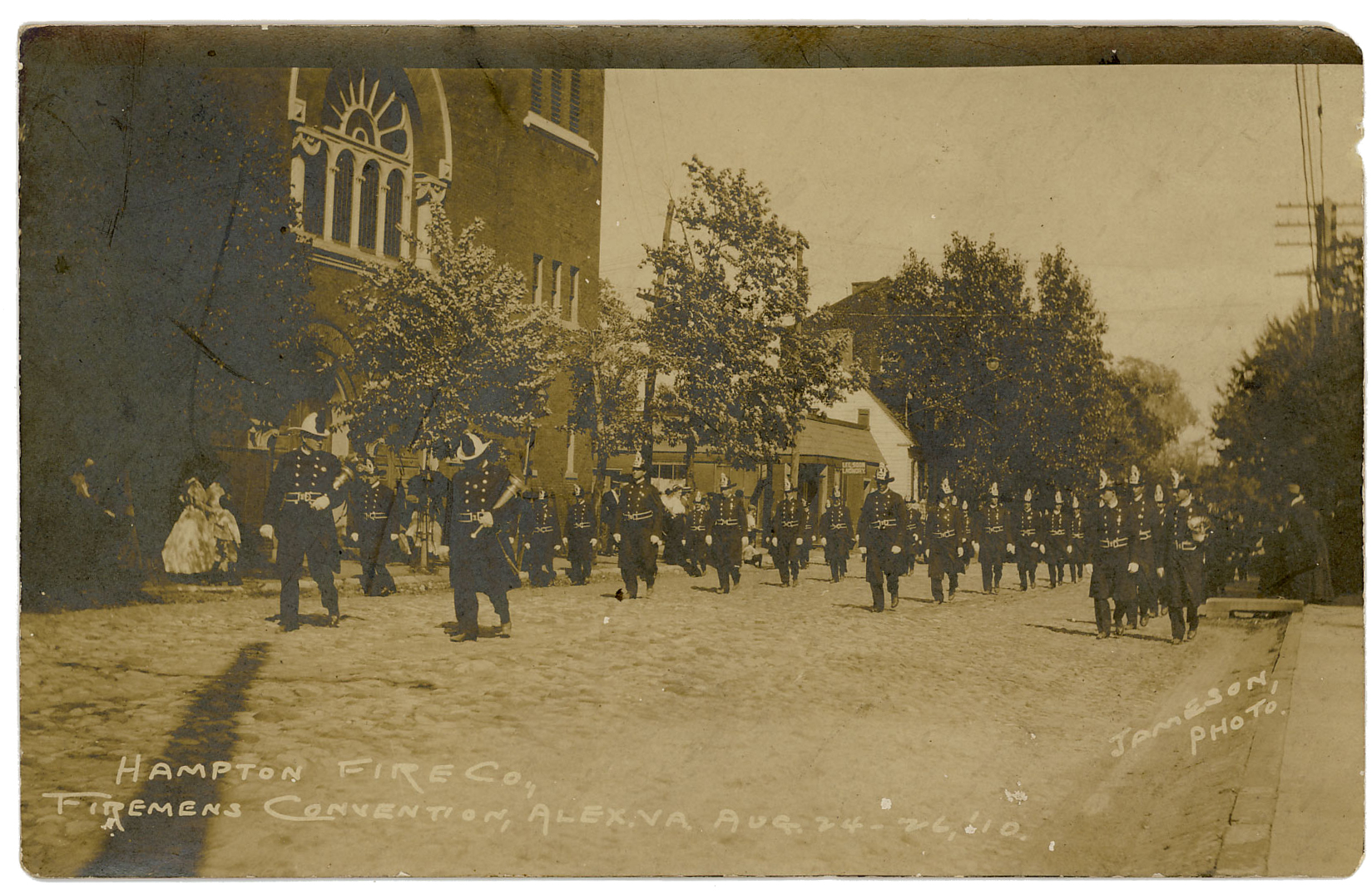

I think this article is proof that there is always something interesting in an old photo if you look hard enough. If only there was an app where these photos, objects, and places could be shared and discussed . . . we're getting closer at OurHistoryMuseum!
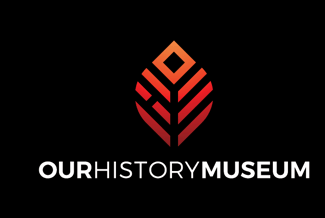
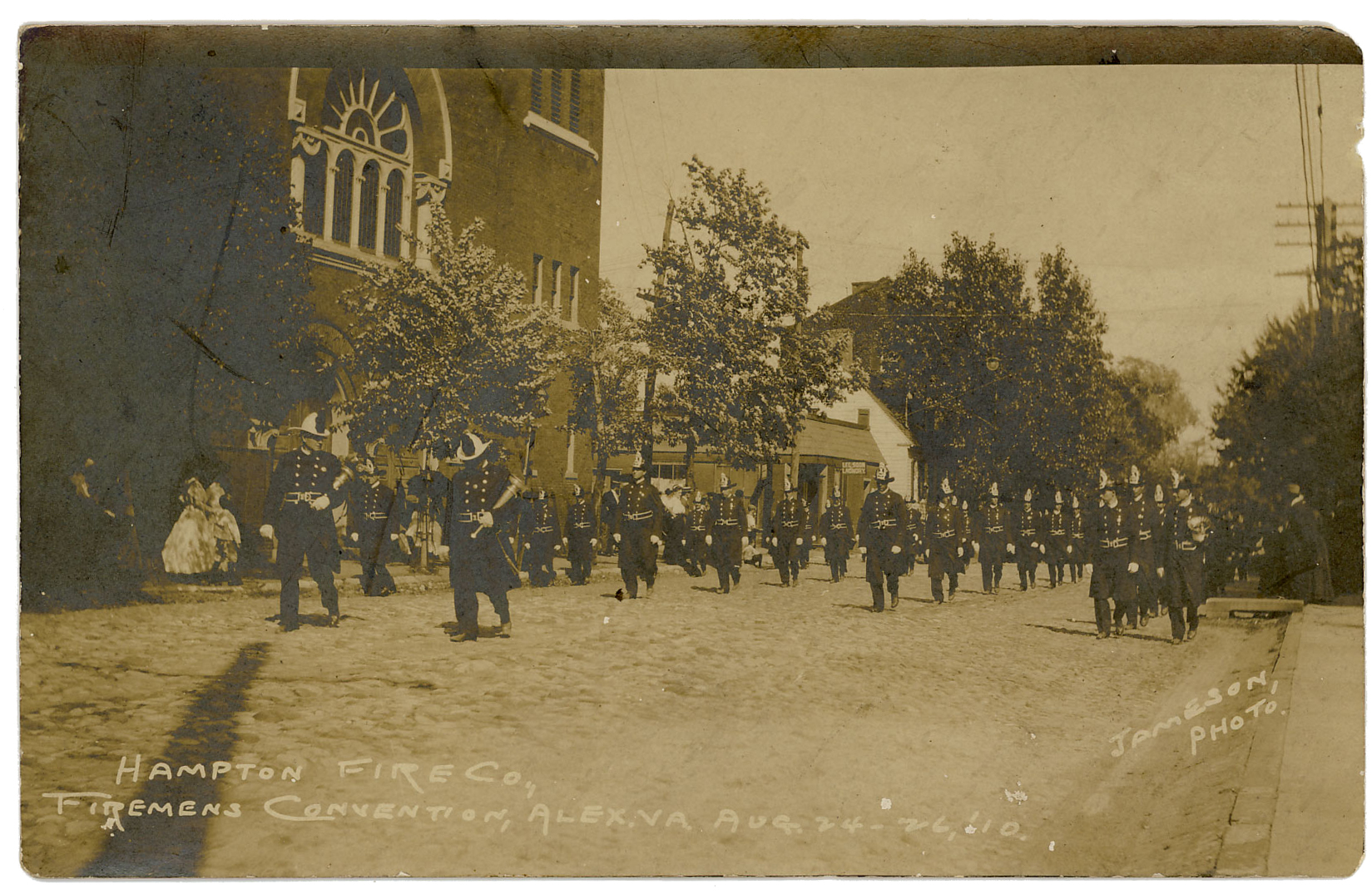

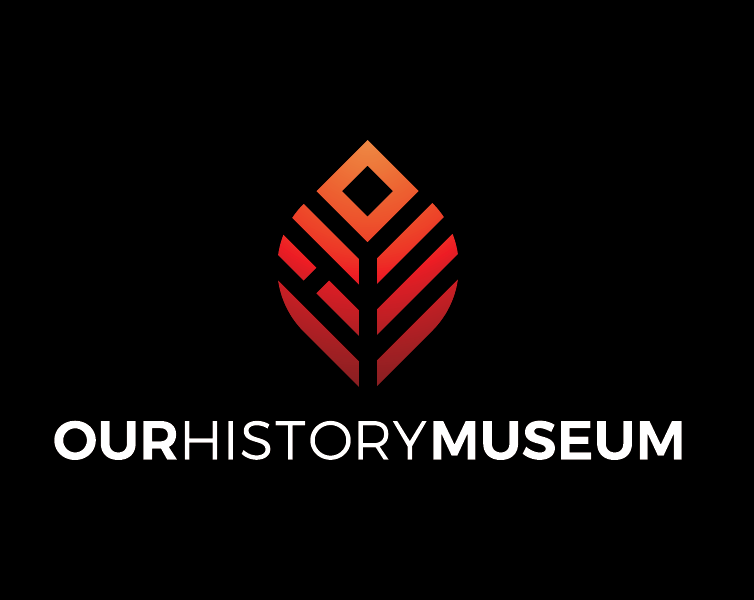
Leave Comment